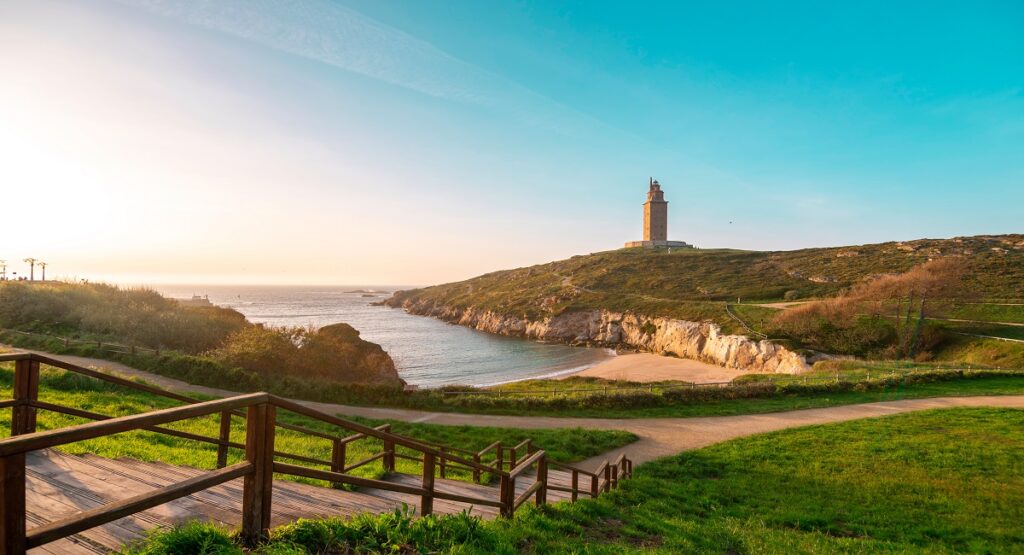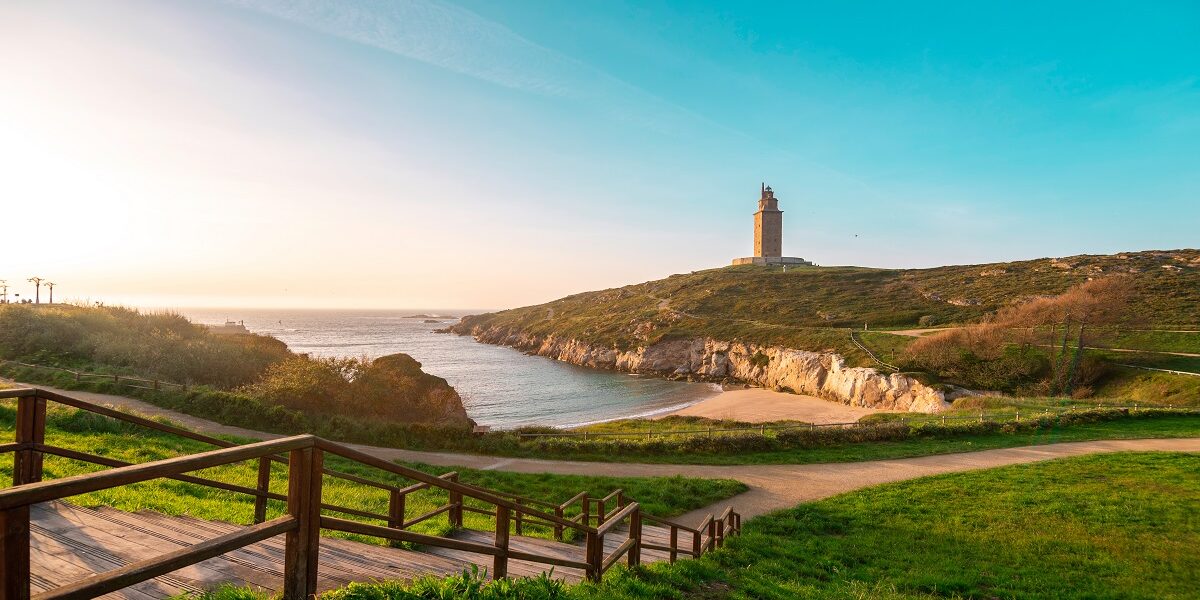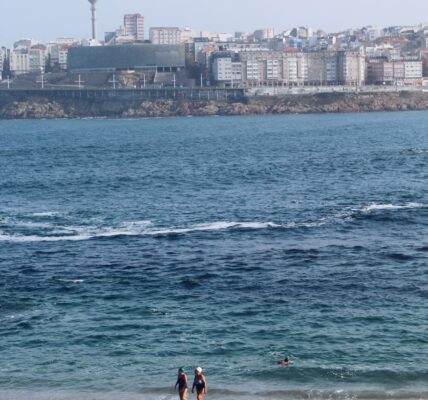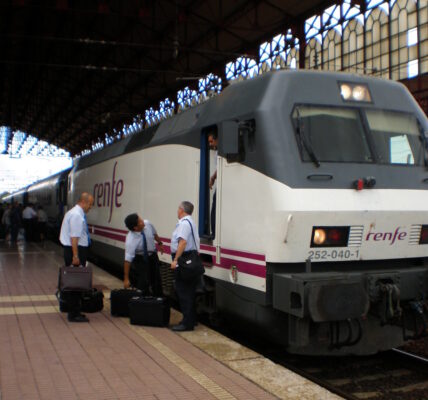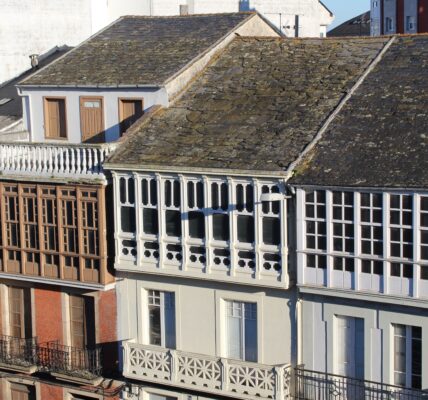The interior of Galicia is characterized by a hilly landscape; mountain ranges rise to 2,000 m (6,600 ft) in the east and south. The coastal areas are mostly an alternate series of rías (estuaries) and beaches. The climate of Galicia is usually temperate and rainy, with markedly drier summers; it is usually classified as oceanic.
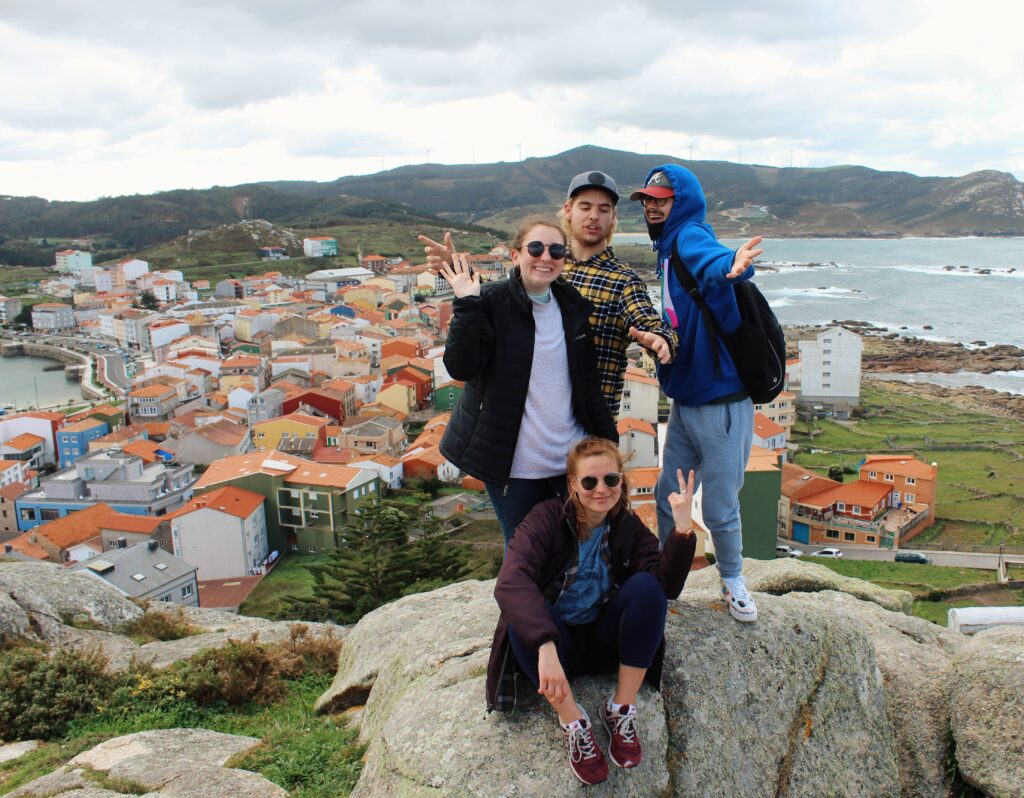
Its topographic and climatic conditions have made animal husbandry and farming the primary source of Galicia’s wealth for most of its history, allowing for a relative high density of population. With the exception of shipbuilding and food processing, Galicia was based on a farming and fishing economy until after the mid-20th century, when it began to industrialize. In 2018, the nominal gross domestic product was €62,900 million, with a nominal GDP per capita of €23,300.
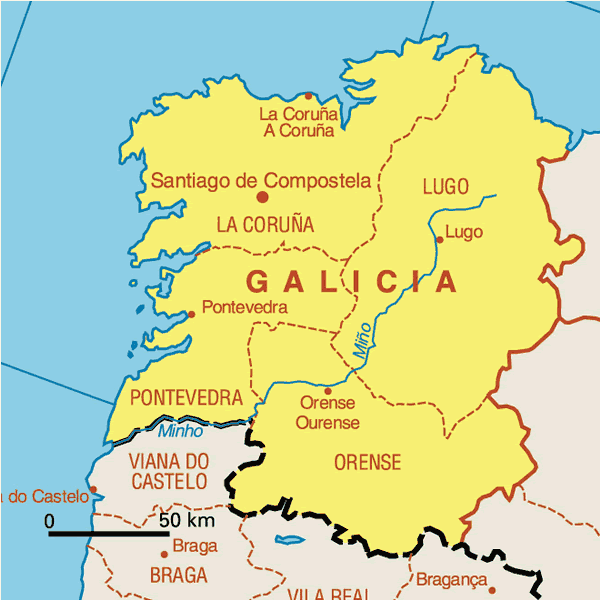
Galicia is characterized, unlike other Spanish regions, by the absence of a metropolis dominating the territory. Indeed, the urban network is made up of 7 main cities (the four provincial capitals A Coruña, Pontevedra, Ourense and Lugo, the political capital Santiago de Compostela and the industrial cities Vigo and Ferrol) and other small towns.
